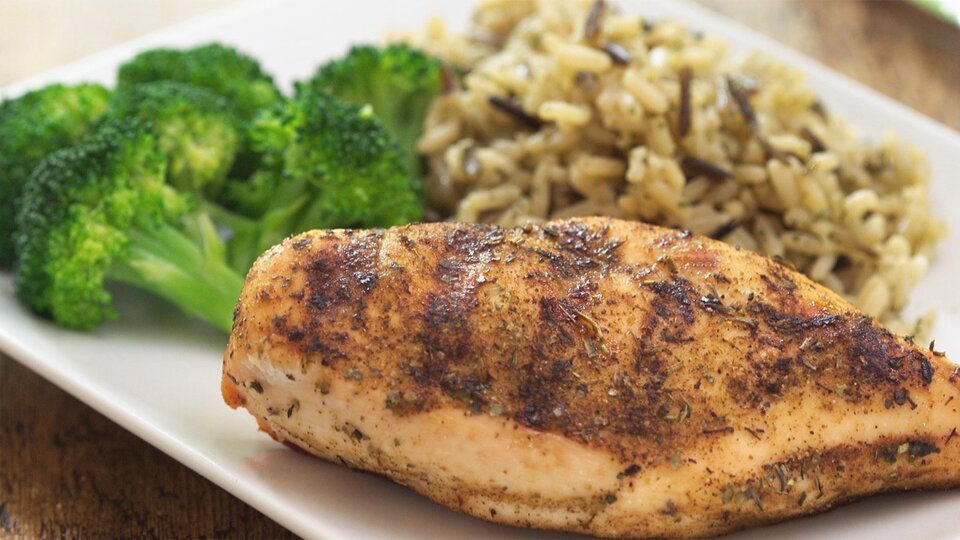Losing fat, or cutting, isn’t easy. Further complicating matters are the dozens of fad diets all promising substantial weight loss in only a few days’ time. Most of them amount to starvation wrapped in really attractive marketing.
That’s where we come in: with help in sorting through the hype.
These two widely used methods of cutting fat can help you get ripped, ready, and rocking for the long haul. Consider their pros and cons to determine which is best for you.
Fat-Loss Method 1: Following a Set Meal Plan
In the days before apps, smartphones, tablets, and the internet, people looking to cut fat and get in shape sought out a personal trainer and received a total fitness plan for diets and workouts. Every last detail was laid out, including how much food to eat and at what times it should be eaten. This regimented approach to fat-loss nutrition has worked for plenty of individuals wanting to shed fat. No one can question its effectiveness, but it does come with pros and cons.
The Pros
Having a set meal plan developed by a specialist eliminates all of the stress and mental fatigue that can come with trying to determine how to eat for fat loss. Simply follow the plan, eat x amount of food at each meal, and in a few weeks’ time, voila! You’re slim, trim, and looking fine!
A meal plan also helps to eliminate wasted food or the temptation to snack. You purchase a set number of food items at the store, and that’s it. No mindless snacking, no frivolous impulse purchases, no wasted expense.

The Cons
The downside to the set-meal-plan approach is that it can become boring after a while. Typically, such plans include a very limited number of foods that you eat day after day. What happens if you’re not in the mood for chicken and rice? Too bad. The meal plan says to eat it, and that’s all you know.
This leads to the larger problem with set meal plans—they don’t actually teach you how to set up an effective fat-loss diet on your own. All they tell you is, “Eat this, not that.” What happens after you finish dieting and are ready to start eating normally again? You head back to your trainer and get a new meal plan for maintaining or bulking.
The problem is, you never really learn how to structure a sustainable, effective way of eating on your own, which brings us to the next fat-loss dieting approach.
Fat-Loss Method 2: Counting Macros
Macros, short for macronutrients, are the protein, carbohydrates, and fats present in the foods you eat. Each food contains varying amounts of each macronutrient, which determines how many calories it has and how “good” the food is for your particular needs.
All calories aren’t created equal. A 16-ounce regular soda has about as many calories as a 4-ounce chicken breast, but the two have dramatically different macronutrient profiles. The soda is pure sugar, while the chicken is 98 percent protein, with a touch of fat. So with this approach, you’ll have target numbers of each macro that you need to consume each day.
When tracking macros for fat loss, it’s important to prioritize protein, which helps combat hunger and preserves muscle mass during a calorie deficit. Following protein, you set your fat macros for the day. The rest of your calories usually come from carbohydrates.
The Pros
When you take the counting-macros approach to dieting, you’re free to eat whatever foods you want in order to hit your daily macronutrient goals. This makes macro counting incredibly liberating and opens up a whole new world of foods you can eat. If you’re not in the mood for chicken and broccoli, you can have steak and asparagus, yogurt and berries, or anything else so long as you hit your target carbs, proteins, and fats for the day. This style of eating is also known as the “if it fits your macros” (IIFYM) approach to dieting.

Following IIFYM alleviates the boredom and mental drain that can come with a regimented meal plan. If you’ve got room in your macros for a piece of chocolate or scoop of ice cream at the end of the day, feel free to enjoy without guilt. It may actually do some good, too, by reducing the stress that comes with dieting.
Still, all isn’t perfect with the macro-counting approach to fat loss.
The Cons
One drawback to macro counting is the potential for taking matters to extremes and filling your diet with doughnuts, pizza, and cookies. Sure, these foods could fit into anyone’s diet, but if you’re basing your food choices on calorically dense, relatively nutrient-poor foods, you’re going to have one heck of a hard time hitting your target macros for the day.
Another drawback to the macro-counting approach is that it’s just too tedious for some people. Not only do you have to weigh out all of your food down to the last gram, but you also have to calculate the breakdown of carbs, fats, and proteins. Then, you need to figure out what kind of foods to eat for your next meal so that you hit your macronutrient goals dead on at the end of the day.
Now, tedious doesn’t mean it’s any worse or better than abiding by a prescribed meal plan. It’s just another way to help you get lean and mean. For some people, counting macros isn’t bothersome, and a few actually enjoy it. For others, it’s too much minutiae to be dealing with in addition to all of the other stuff life throws their way.
The Bottom Line
Dieting for fat loss is never easy, but it can be accomplished any number of ways, with two of the most popular options being the set-meal-plan route and tracking macros. Both are effective, but each comes with potential downsides to consider when you’re deciding which way to go.
